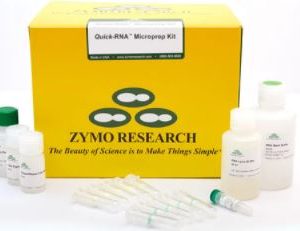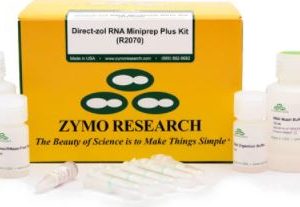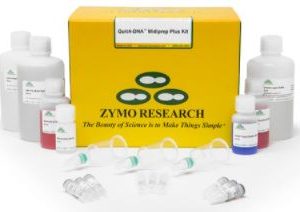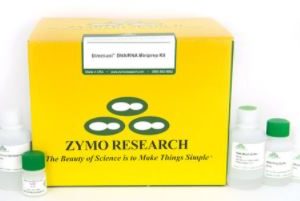M200-Anti-Protein S monoclonal antibody- Takara
$509.00
Anti-Protein S monoclonal antibody
Anti-Protein S monoclonal antibody can be used for detection of ProS2-fused proteins expressed from thecold shock expression vector pCold ProS2 DNA (Cat. # 3371). ProS2 is an approximately 23 kDa soluble tandem dimer peptide tag derived from the N-terminal domain of Protein S, a soluble protein that originates from the myxobacterium species Myxococcus xanthus.
More Information
Applications
- Protein S expression from pCold ProS2 DNA
- Detection of ProS2-fused protein
- Western blot analysis under reducing and non-reducing conditions (0.5-1 µg/ml)
- Immunoprecipitation (10 µg/ml)
- Use with cold shock expression vector pCold ProS2 DNA
| Cat. # | Product | Size | Description |
| M200 | Monoclonal Anti-Pro S2, (Clone ProS 7B-8F) | 0.1 mg |
Anti-Protein S is a monoclonal antibody used for detection of ProS2-fused protein expressed by using pCold ProS2 DNA. ProS2 is about 23 kDa of a solubilization tag which is a tandem-dimer of the N-terminal domain of Protein S, a soluble protein derived from myxobacteria Myxococcus xanthus |
| M146 | Monoclonal Anti-Human Influenza A (H3N2) (Clone F49) | 0.1 mg |
Influenza virus is classified into three groups (A, B, and C). Clinically prevalent types of Influenza virus are H1, H3 and B strain. Influenza virus is further classified into subtypes based on variances in Neuraminidase (NA) and Haemagglutinin (HA) that are the surface glycoprotein of the virus. H1N1 subtype and H3N2 subtype are known to cause severe febrile illness. An influenza virus particle consists of a head region and a stem region. The head region has a receptor domain and the stem region contains a region required for fusion between the virus and the target cell. Takara offers several influenza antibodies that are useful for various viral detection and typing methods, as well as neutralization assays. These antibodies are for research use only. |
| M148 | Monoclonal Anti-Human Influenza B (Clone 9D6) | 0.1 mg |
Influenza virus is classified into three groups (A, B, and C). Clinically prevalent types of Influenza virus are H1, H3 and B strain. Influenza virus is further classified into subtypes based on variances in Neuraminidase (NA) and Haemagglutinin (HA) that are the surface glycoprotein of the virus. H1N1 subtype and H3N2 subtype are known to cause severe febrile illness. An influenza virus particle consists of a head region and a stem region. The head region has a receptor domain and the stem region contains a region required for fusion between the virus and the target cell. Takara offers several influenza antibodies that are useful for various viral detection and typing methods, as well as neutralization assays. These antibodies are for research use only. |
M147 | Monoclonal Anti-Influenza A (H1, H2, H3) (Clone C111) | 0.1 mg |
Influenza virus is classified into three groups (A, B, and C). Clinically prevalent types of Influenza virus are H1, H3 and B strain. Influenza virus is further classified into subtypes based on variances in Neuraminidase (NA) and Haemagglutinin (HA) that are the surface glycoprotein of the virus. H1N1 subtype and H3N2 subtype are known to cause severe febrile illness. An influenza virus particle consists of a head region and a stem region. The head region has a receptor domain and the stem region contains a region required for fusion between the virus and the target cell. Takara offers several influenza antibodies that are useful for various viral detection and typing methods, as well as neutralization assays. These antibodies are for research use only. |
| M149 | Polyclonal Antibody to Human Influenza A, B (Rabbit Polyclonal) | 0.4 mg | Influenza virus is classified into three groups (A, B, and C). Clinically prevalent types of Influenza virus are H1, H3 and B strain. Influenza virus is further classified into subtypes based on variances in Neuraminidase (NA) and Haemagglutinin (HA) that are the surface glycoprotein of the virus. H1N1 subtype and H3N2 subtype are known to cause severe febrile illness. An influenza virus particle consists of a head region and a stem region. The head region has a receptor domain and the stem region contains a region required for fusion between the virus and the target cell. Takara offers several influenza antibodies that are useful for various viral detection and typing methods, as well as neutralization assays. These antibodies are for research use only. |
| Product | M145, M146, M148, M147, M149 |
|---|





